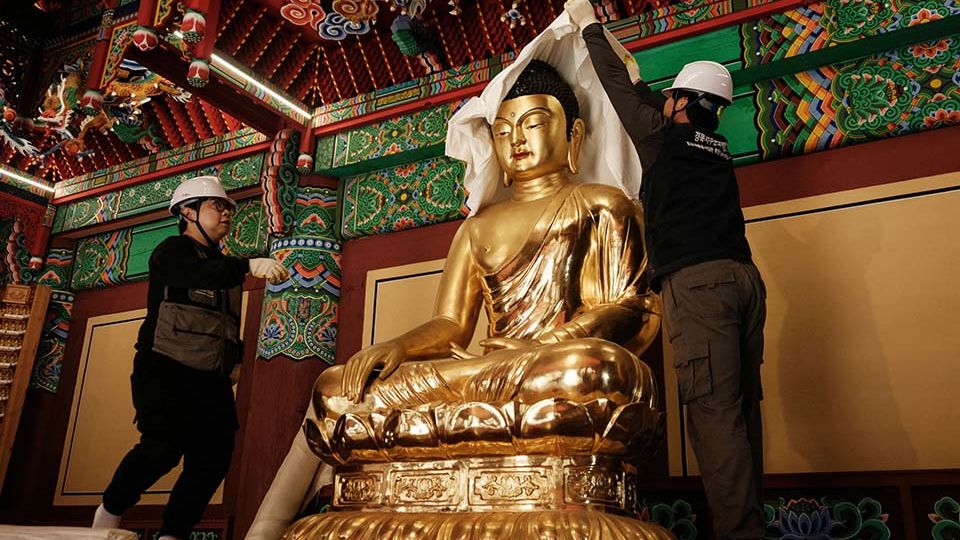March 26, 2025
SEOUL – Hahoe village, S. Korea’s World Heritage site, under high threat of wildfire spreading fast on strong winds with embers
Wildfires in North Gyeongsang Province razed an ancient temple and triggered an evacuation alert in parts of neighboring Andong and a historic village designated as a World Heritage site.
According to the authorities, the wildfires were spreading eastward, fanned by strong winds, toward Oksan-myeon and Jeonggok-myeon in Uiseong County, and also were moving north to areas of Pungcheon-myeon in Andong.
Two UNESCO World Heritage sites — Andong Hahoe Folk Village and Byeongsanseowon Confucian Academy — are located in Pungcheon-myeon.
Gounsa Temple in Uiseong, a historic site over 1,000 years old from the Silla Dynasty, was completely destroyed by fire around 4:50 p.m., according to forest authorities.
Fortunately, national treasures housed at the temple had been relocated to other locations in North Gyeongsang Province before the wildfires spread to the area.
To combat the blazes, authorities have deployed 77 helicopters and more than 3,000 personnel. As of Tuesday afternoon, train services and highway traffic in the southeastern region were suspended, according to state railway and highway operators.
The Ministry of the Interior and Safety previously announced that the strong winds and dry conditions had complicated wildfire containment efforts for the fourth consecutive day Tuesday.
Though 65 percent of the wildfires that broke out over the weekend in Uiseong-gun had been put out Monday, the containment rate dropped to 60 percent with the fire line increasing from 164 kilometers to 214.5 kilometers on Tuesday.
More than 12,500 hectares are affected by Uiseong wildfire as of Tuesday, making it to become the third biggest forest fire in the country’s history.
It followed the 2000 East Coast wildfires and 2022 Uljin-Samcheok wildfires, which destroyed 23,794 hectares and 16,302 hectares, respectively.
The wildfires in Uiseong-gun have forced almost 4,000 people to evacuate and damaged 92 private and public facilities. So far, it has left no casualties.
The fire, however, spread to Cheongsong, North Gyeongsang Province, where police found a woman in her 60s who had burned to death. Police assume her death was due to the wildfire.
While blazes in Uiseong-gun are not yet fully contained, the other major wildfires that simultaneously broke out over the weekend — in Sancheong-gun and the city of Gimhae in South Gyeongsang Province, Okcheon-gun in North Chuncheong Province and Ulju-gun, a western district in Ulsan — came under greater control.
The wildfire that scorched 1,557 hectares south of Sancheong-gun was 88 percent contained. Three other fires are expected to be put out as the spread has been effectively stopped as of Tuesday morning.
With the government announcement on Monday, Sancheong-gun, Uiseong-gun, Ulju-gun and Hadong-gun, South Gyeongsang Province were listed as special disaster zones.
The designation of a special disaster zone allows the government to provide partial financial aid for the restoration of both private and public facilities damaged by wildfires. The affected residents will also receive a range of financial support, including a reduction in public utility fees, deferred local tax payments and more.
Wildfires in southeastern South Korea claimed the lives of five people, including wildfire responders and civil servants, and injured 11 others.


